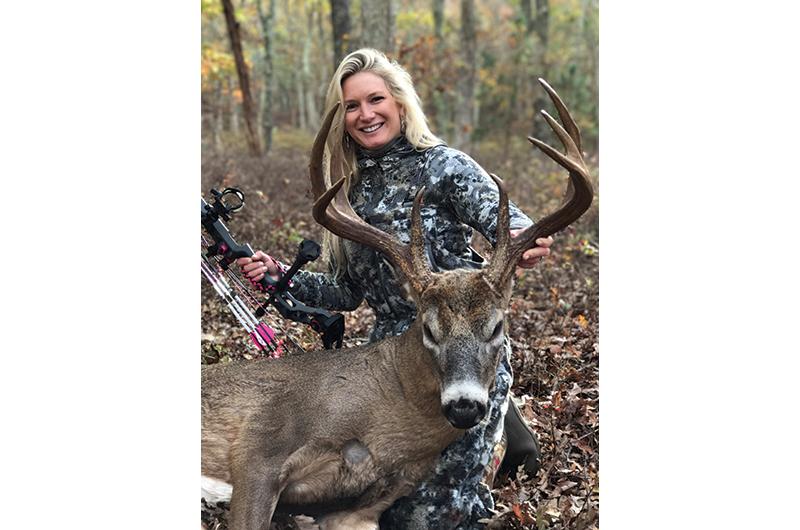Ages ago, humans communicated in grunts – similar in complexity to text messages – and meat was free range and covered in hair, not wrapped in plastic. Hunting was essential to survival and ancient societies valued the individual who could skillfully hurl a spear at a mastadon with enough force to put food on the table.
Modernization has changed how we shop. The meat you eat no longer has an opportunity to eat you first. At the market we pay a premium to allow our food to roam the range on its way to a processing plant. Our protein is nicely packaged and labelled as Darwin-approved. The prestige once accorded the skilled hunter now belongs to the individual who can recover data from a crashed hard drive.
But human nature is not easily erased. No longer a matter of survival, hunting is a recreational activity enjoyed by 11.5 million men and women across the country, according to a 2016 survey by the U.S. Fish and Wildlife Service. But how does one become a hunter? In rural areas of America where the hunting tradition runs deep, skills are often passed along from generation to generation by a family member or friend. Urban dwellers, and Islanders, can follow a different path from novice to nimrod (that’s the “skillful hunter” definition of nimrod; not an incompotent person).

The first step is to enroll in a hunter education course. The Massachusetts Division of Fisheries and Wildlife (MassWildlife) sponsors free basic hunter education courses across the state, including on the Island, taught by trained volunteer instructors. Class material includes safe handling and storage of hunting arms and ammunition, hunting laws and ethics, care and handling of game, and wildlife conservation. MassWildlife also offers more advanced, game-specific classes.
Island hunter education team leader Jeffrey Day, a Tisbury police officer, said that over the course of the past sixteen years the class size has nearly doubled. But because participation fulfills the mandatory requirement to qualify for a firearms license in Massachusetts, not all of that increase can be attributed to new hunters. That said, in recent years Day does believe he’s seen an uptick in hunting interest, which he attributes to a focus on reducing the Island deer herd to control tick-borne infections, and personal health.
“People have legitimate concerns about where their food comes from….They want to have their hands on the controls of where it is harvested and how it is processed,” he said. “People understand the nutritional value of eating wild game as opposed to meat that is chemically enhanced with growth hormones, preservatives, etc. It’s a very healthy idea.”
One of the points he makes in class is that hunting is a sport that allows for family participation among multiple generations – grandparents, parents, and children – and, as he puts it, “It’s fun.”
Another member of the hunter education team is Bret Stearns, director of the Wampanoag tribe natural resources department. Asked what motivates individuals from non-hunting families to take the class, he points to an Island quality of life. “Hunting is not solely about the harvest, it is the experience of interacting with the outdoors, sensing the environment around you in a way that is not otherwise experienced by any other activity. We live in a place that embraces and accepts hunting as part of our lifestyle.”
Day and Stearns said they see fewer young people taking the class, which mirrors a statewide and national trend. Susan Langlois, MassWildlife hunter education program administrator, said mostly adult students take the course. “In any given year the average age of our graduates is twenty-eight to thirty-two years old and most recent graduates (73.2 percent) indicated that they took the hunter education course because they wanted to hunt,” she said.
Newell Isbell Shinn of West Tisbury, production manager for South Mountain Company, fits the profile of recent graduates. Shinn, thirty-eight, bagged his first deer in December during shotgun season. This season he anticipates hunting with a bow. He said he’s always loved the outdoors, but had little connection to the food on his table. “I wanted the experience of stalking, killing, and processing an animal for food, of really knowing and understanding in a visceral way how that meat came to my plate – or stew bowl,” he said.
Shinn said the course was more beneficial than he expected. “What I didn’t realize was how much I would learn, not just about safety, but also about hunter ethics and fair chase.”
But even the best classroom environment has its limitations. Shinn said assistance from friends and mentors is what made his first season fun and rewarding. “There are a million things to know about how to walk, where and when to go, how to approach your spot in the dark, how to get a deer out of the woods….Hunter ed doesn’t even attempt to cover many of these points, so a good buddy or two is invaluable.”
A very “good buddy,” Joe Rogers, was the catalyst for Phoenix (Russell) Rogers. “My boyfriend at the time, now husband, was big-time into hunting, so it was a way to spend more time together,” she said.
Rogers completed the Island hunter ed class in 2013. “So Joe bought me a bow and it was all over after that,” she said.
Rogers, twenty-nine, a wampum artist, took the magnificent Island archery buck in this photo last winter.
Rogers and Shinn are among the 50,000 deer hunters in the state, a figure that has remained steady for the past ten years. They are part of a tradition represented in ancient drawings that date back more than 30,000 years. Although Facebook and Instagram have replaced images on cave walls, the excitement and challenge of the hunt remains unchanged.




